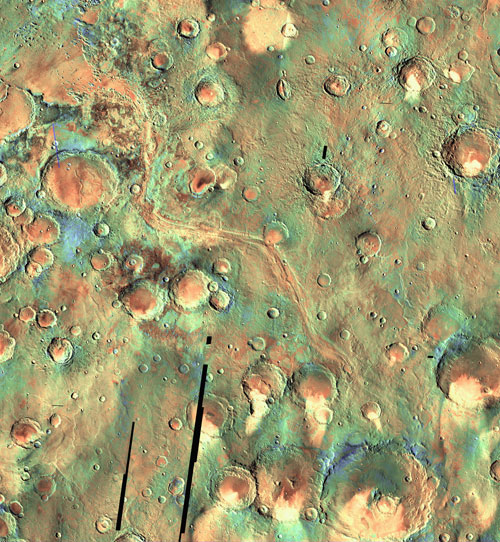|
|
 |
| Martian Terrain |
 |
| Return to Martian Terrain index |

|
|
Full Res JPG (64.3 MB)
|
|
Martian Clays Beckon
Weathered clay deposits sliced by a channel known as Mawrth Vallis, from the Welsh word for Mars, are one of 36 areas under consideration as potential landing sites for the Mars Science Laboratory, scheduled for launch in 2009. NASA's Odyssey orbiter is helping Mars explorers identify safe places to land. Clays, such as those revealed in the Martian highlands by the OMEGA instrument on the European Space Agency's Mars Express orbiter, are of interest to scientists because nature requires lots of water to make them and once formed, they readily preserve evidence of life.
The Thermal Emission Imaging System on the Odyssey spacecraft can distinguish loose materials such as dust and sand based on heat retention compared with other materials such as rock outcrops. In this false-color image, loose materials appear blue and green and rock outcrops appear reddish-brown. One potential landing site is the smooth, blue area on the north rim of the crater on the upper left, west of where Mawrth Vallis empties into the vast northern lowlands of the Red Planet aftering winding for 640 kilometers (400 miles) across its surface.
Credit: JPL-Caltech/ASU
|
JPL Image Use Policy
|